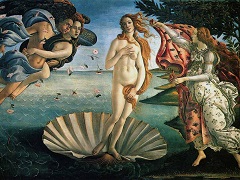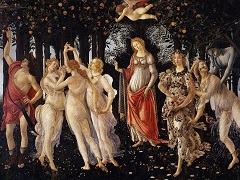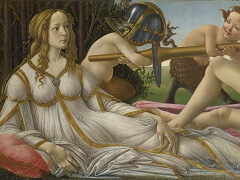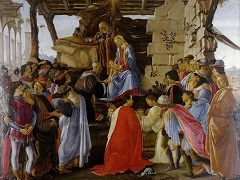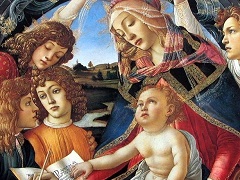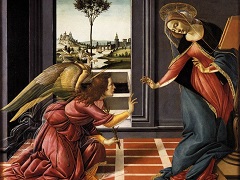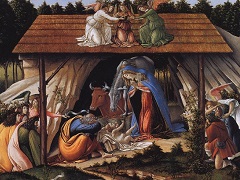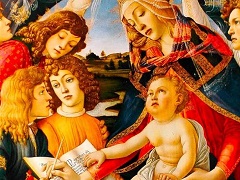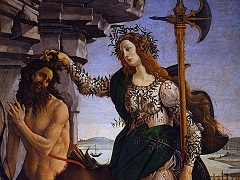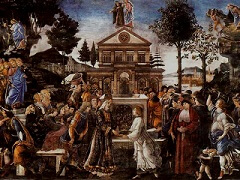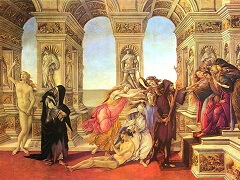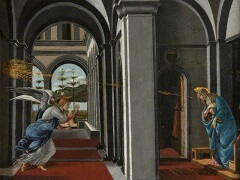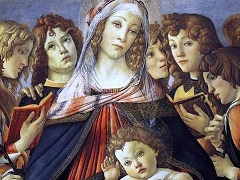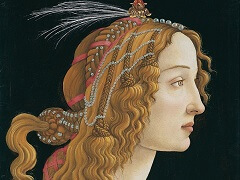Punishment of the Rebels by Sandro Botticelli
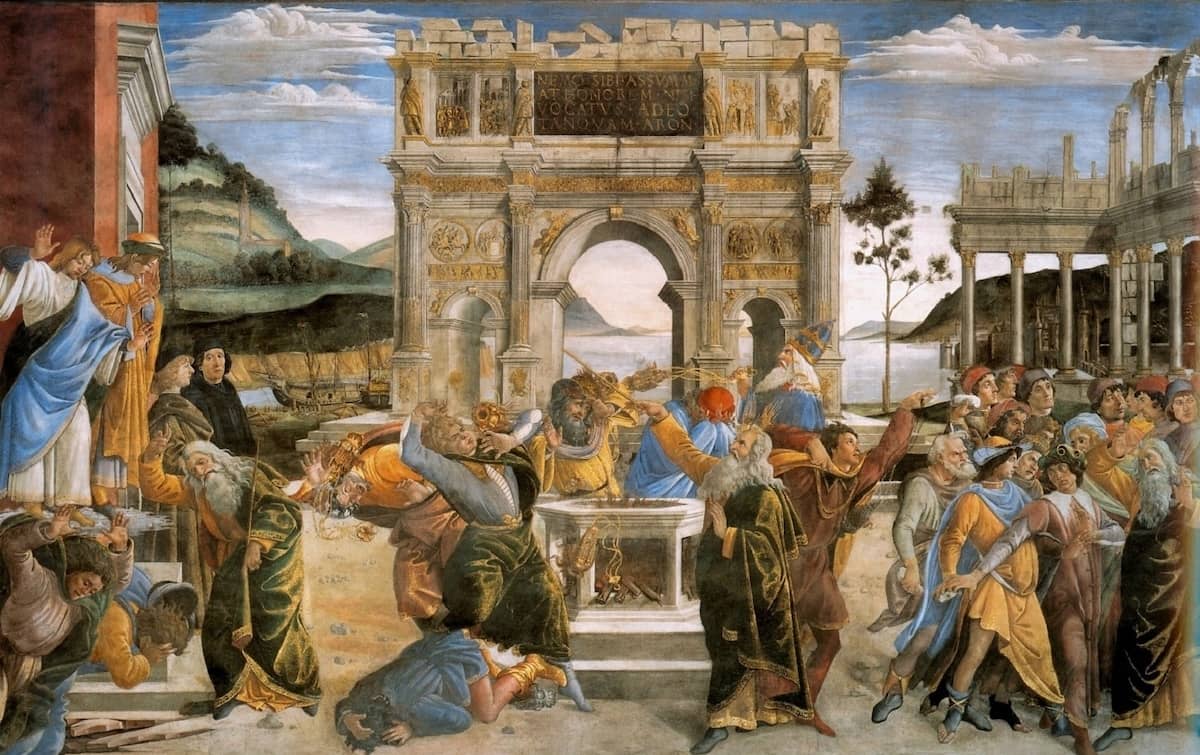
Sandro Botticelli had been receiving more and more commissions from clients outside Florence since the end of the 1470s; the most renowned of these was Pope Sixtus IV, upon whose orders Botticelli was summoned to Rome in 1481 to decorate the walls of the papal electoral chapel - called the "Sistine Chapel" after its builder, Sixtus IV - with frescoes. However, it was not until the later work on it by Michelangelo, who executed the frescoes on the Sistine Chapel Ceiling and the altar wall between 1508 and 1512 under Julius II, that the chapel would achieve its greatest fame.
One of the most important frescoes in the entire Sistine Chapel is Botticelli's Punishment of the Rebels. Place side by side with Michelangelo's The Last Judgment, its message providing the key to an understanding of the chapel as a whole. The fresco reproduces three episodes, each of which depicts a rebellion by the Hebrews against God's appointed leaders, Moses and Aaron, along with the ensuing divine punishment of the agitators. On the right-hand side, the revolt of the Jews against Moses is related, the latter portrayed as an old man with a long white beard, clothed in a yellow robe and an olive-green cloak. Irritated by the various trials through which their emigration from Egypt was putting them, the Jews demanded that Moses be dismissed. They wanted a new leader, one who would take them back to Egypt, and they threatened to stone Moses; however, Joshua placed himself protectively between them and their would-be victim, as depicted in Botticelli's painting. The centre of the fresco shows the rebellion, under the leadership of Korah, of the sons of Aaron and some Levites, who - setting themselves up in defiance of Aaron's authority as high priest - also offered up incense. In the background, we see Aaron in a blue robe, swinging his incense censer with an upright posture and filled with solemn dignity, while his rivals stagger and fall to the ground with their censers at God's behest. Their punishment ensues on the left-hand side of the picture, as the rebels are swallowed up by the earth, which is breaking open under them. The two innocent sons of Korah, the ringleader of the rebels, appear floating on a cloud, exempted from the divine punishment.
The fresco thus holds a warning that God's punishment will fall upon those who oppose God's appointed leaders. This warning also contained a contemporary political reference through the portrayal of Aaron in the fresco, depicted wearing the triple-ringed tiara of the Pope and thus characterized as the papal predecessor. It was a warning to those questioning the ultimate authority of the Pope over the Church. The papal claims to leadership were God-given, their origin lay in Christ giving Peter the keys to the kingdom of heaven and thereby granting him privacy over the young Church. Perugino painted this crucial element of the doctrine of papal supremacy immediately opposite Botticelli's fresco.

